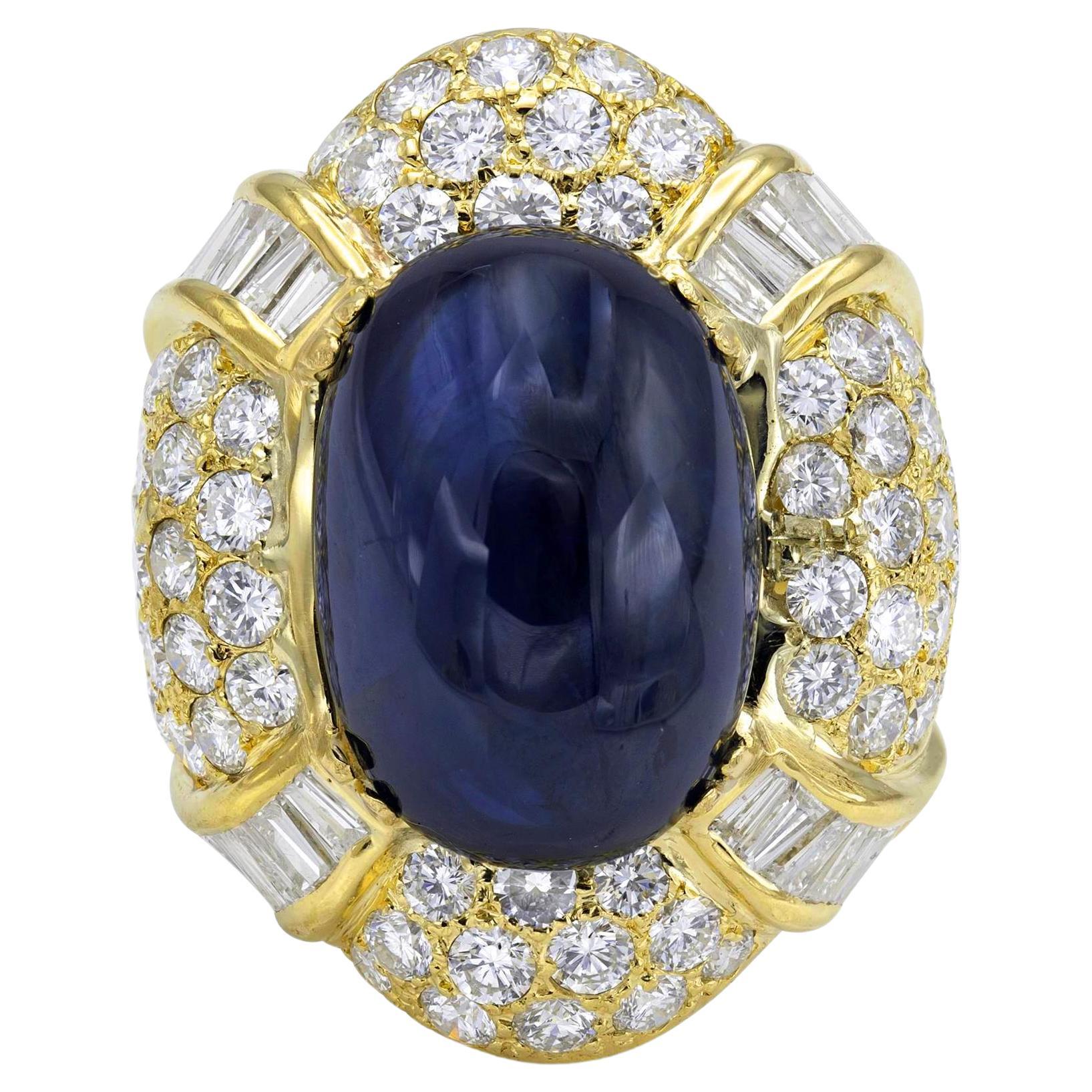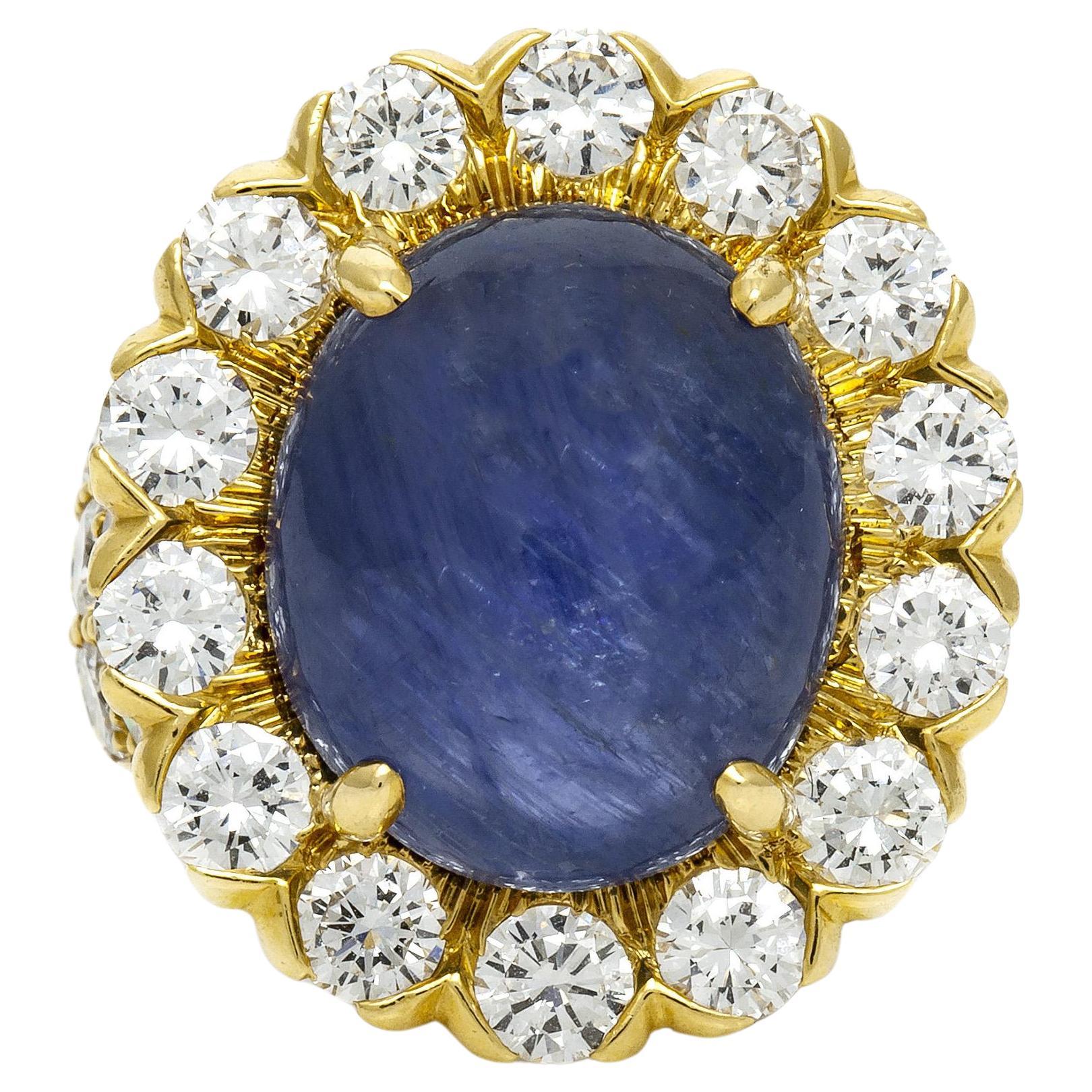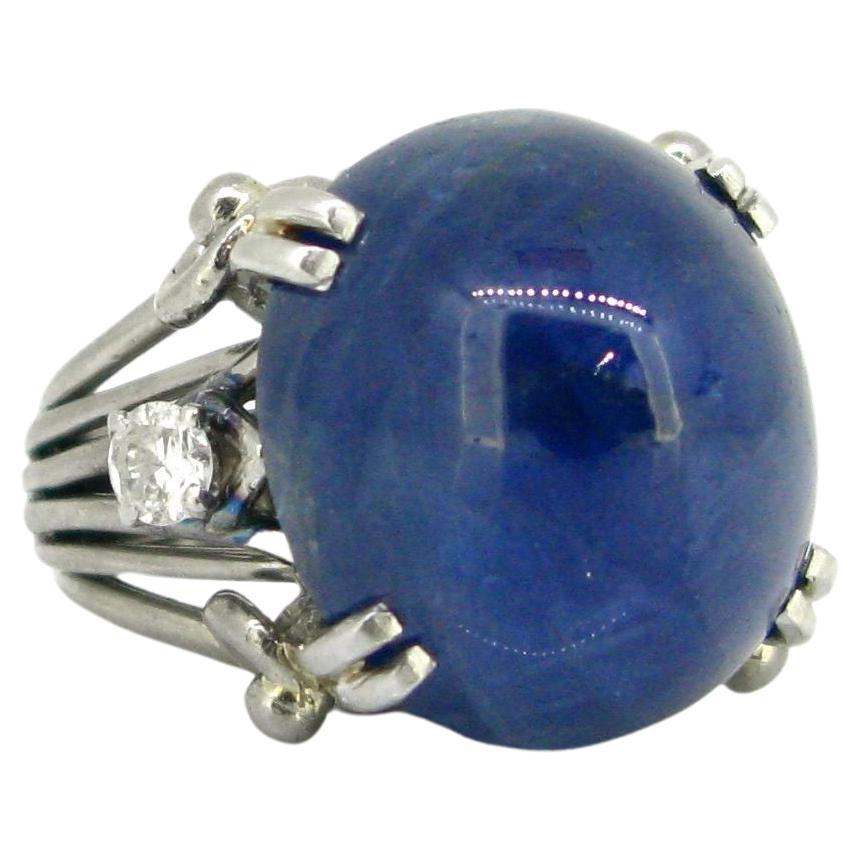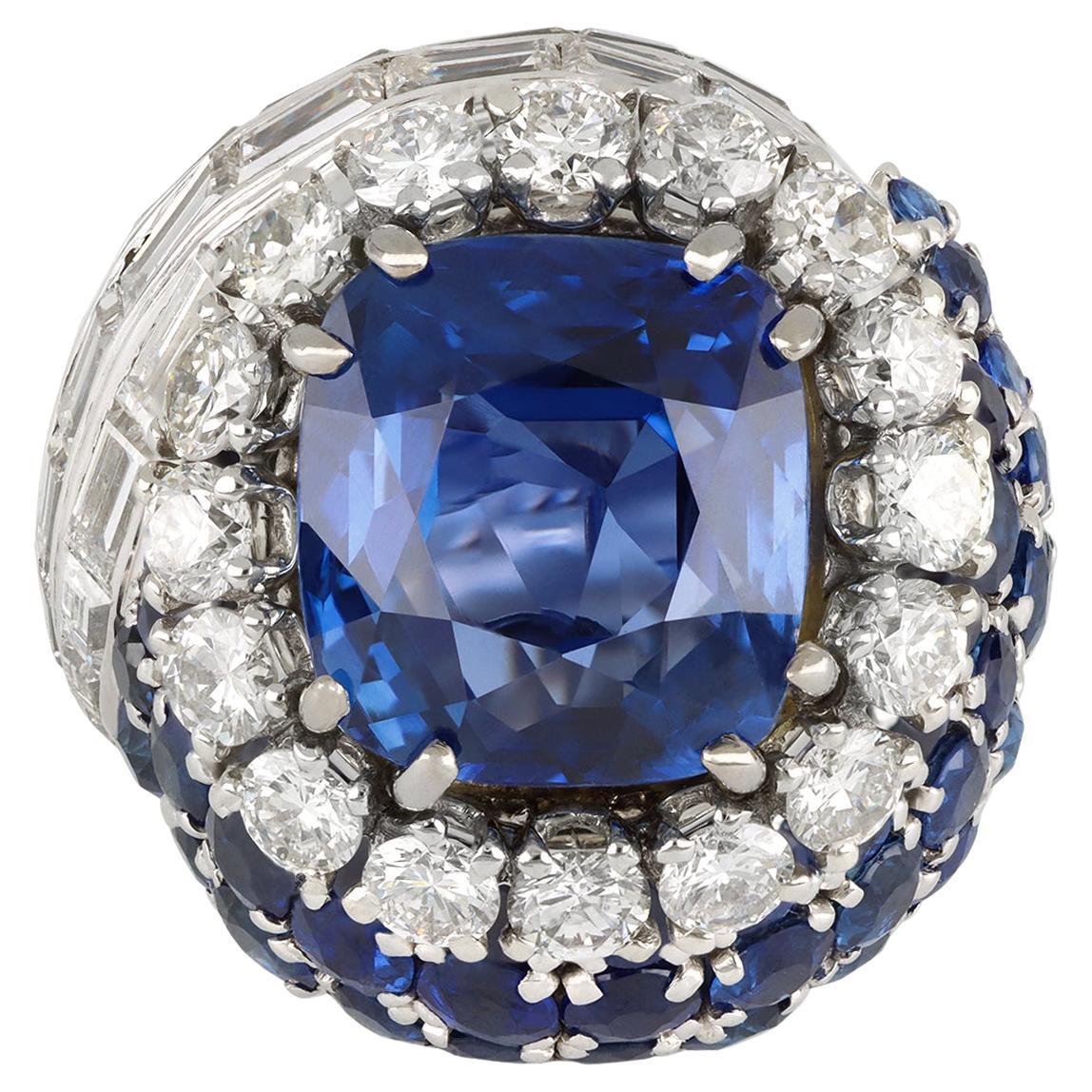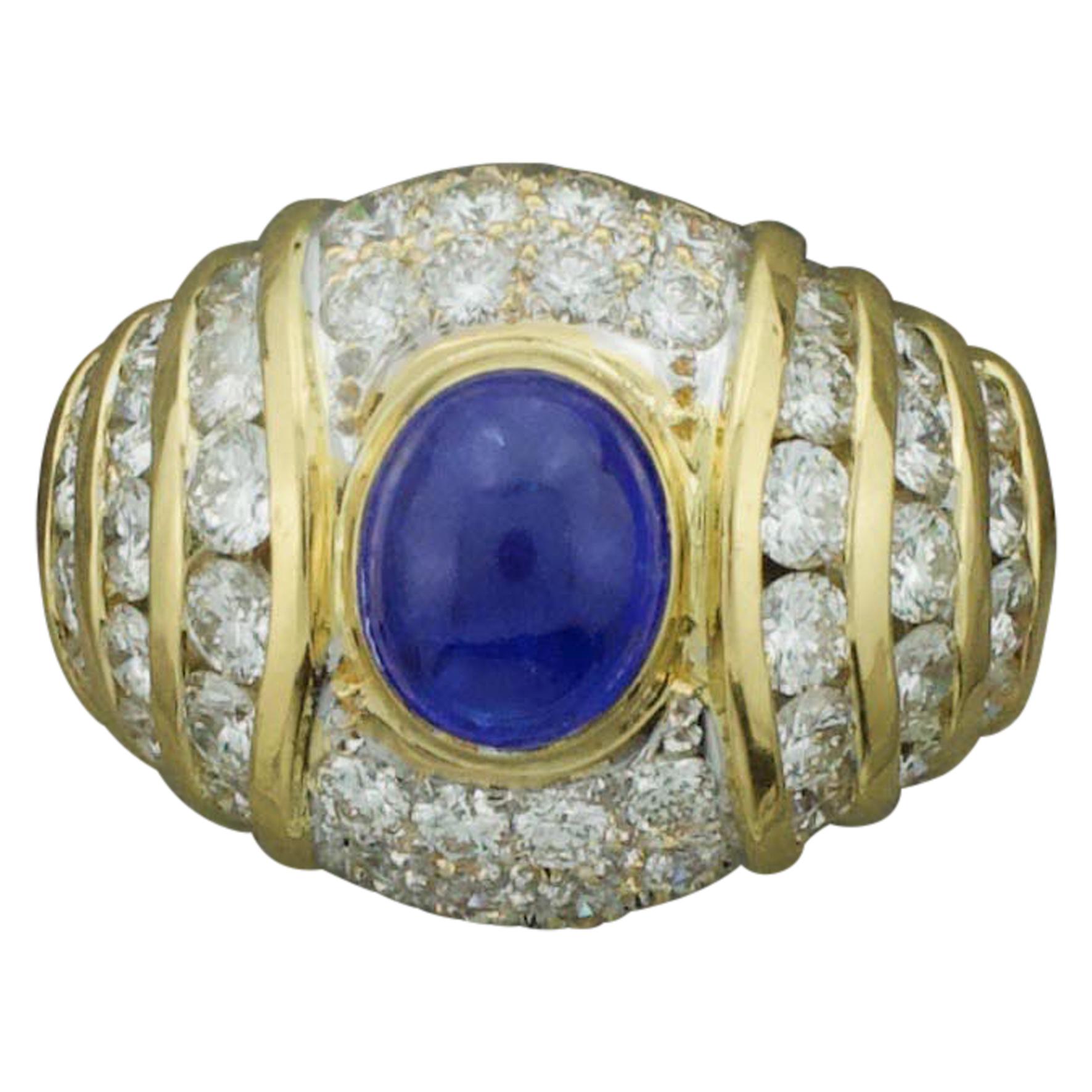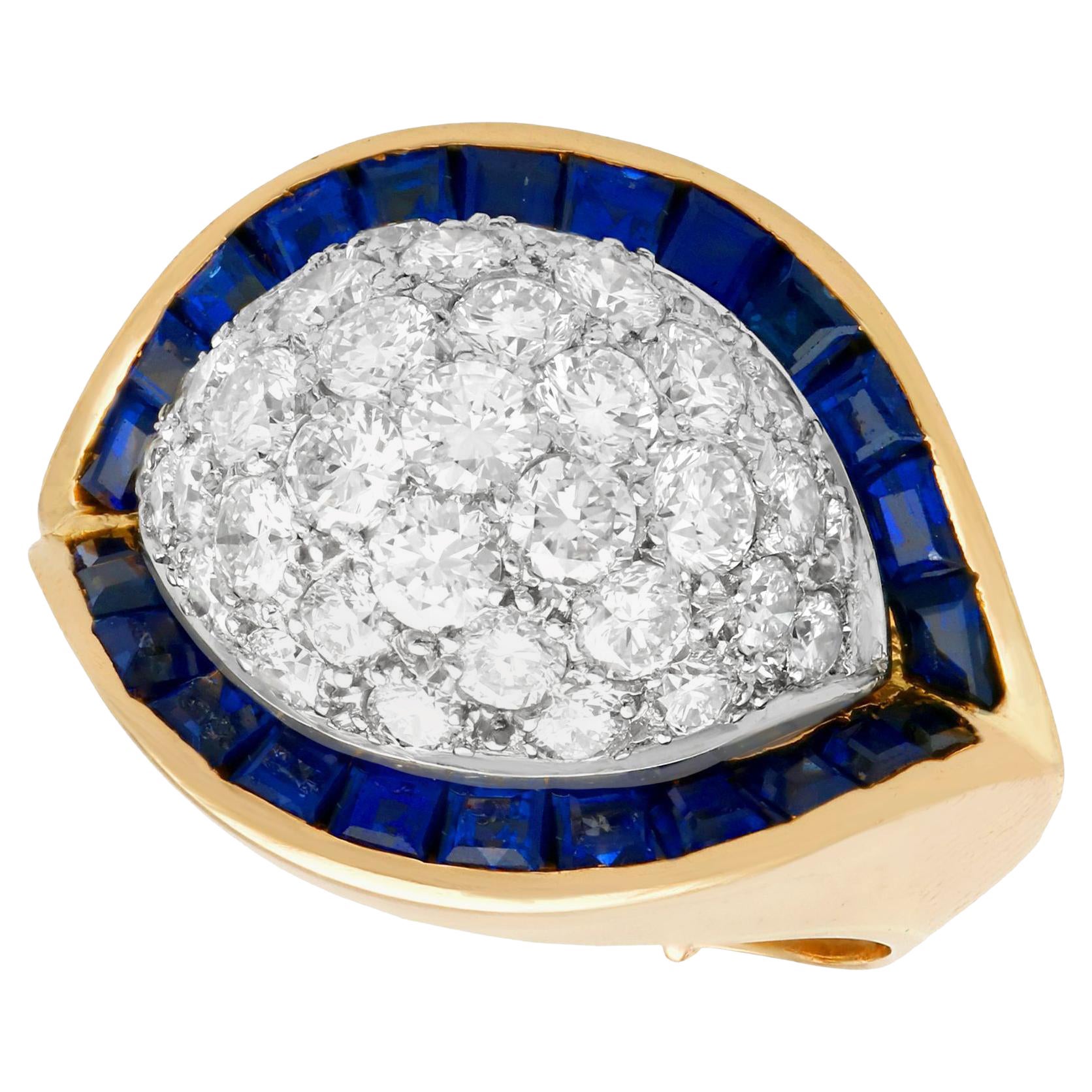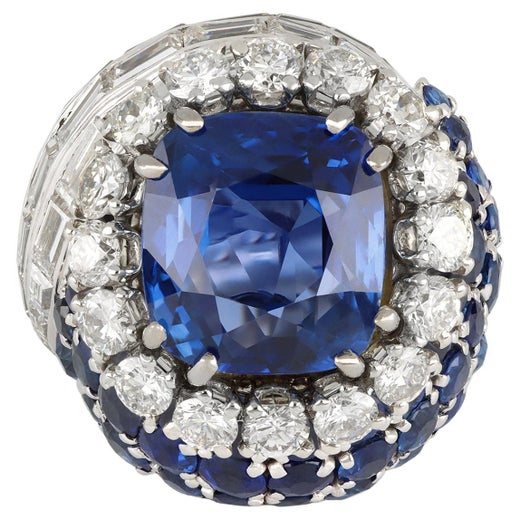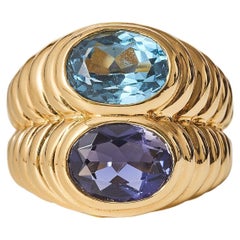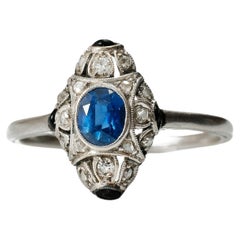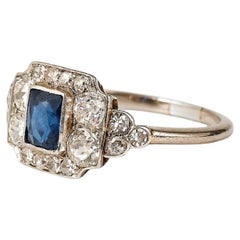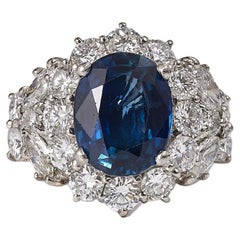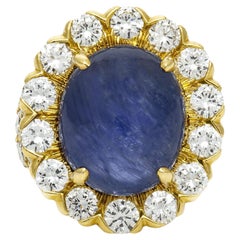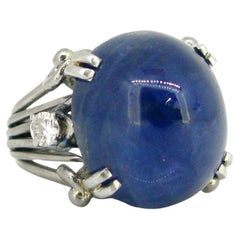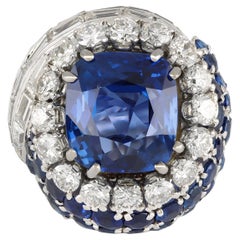Anello con zaffiro 17ct di Sterlé, 1960 ca.
Informazioni sull’articolo
- Creatore:
- Misura dell’anello:49.3 mm, misura modificabile
- Metallo:
- Pietra:
- Taglio:
- Peso:17 ct
- Stile:
- Luogo di origine:
- Periodo:
- Data di produzione:1960
- Condizioni:Usura compatibile con l’età e l’utilizzo.
- Località del venditore:Malmö, SE
- Numero di riferimento:1stDibs: LU3148226504142
Pierre Sterlé
La perdita del padre nella Prima Guerra Mondiale portò S. Pierre Sterléa diventare il mentore dello zio, che sostenne la sua ascesa nel mondo della gioielleria. All'apice del suo successo, Sterlé disegnò per i titani della gioielleria Boucheron, Chaumet e Ostertag. Ha vinto il De Beers Diamond Award per tre anni di fila e ha operato in una boutique esclusiva a Parigi che serviva l'élite e le famiglie reali solo su appuntamento.
Suo zio era un gioielliere parigino in rue de Castiglione. Sterlé ha avviato il suo laboratorio all'età di 29 anni e ha trascorso cinque anni a disegnare per importanti case parigine di gioielli in rue Sainte-Anne. A metà degli anni '40, Sterlé aveva spostato il suo atelier più vicino a Place Vendôme per servire meglio i suoi ricchi mecenati, tra cui l'autrice francese Colette, il re Farouk d'Egitto, il Maharani di Baroda e la Begum Aga Khan.
Sterlé aveva una notevole capacità di "lavorare l'oro" in capolavori di tessitura. La sua abilità tecnica era ineguagliata da chiunque a Parigi, e probabilmente in tutto il mondo. La sua tecnica del "filo d'angelo", considerata la sua firma stilistica, incorpora l'oro in corde sottili che diventano braccialetti A Link, anelli da cocktail e accenti su spille e spilloni decorativi. L'effetto dava un senso di movimento e di vita ai pezzi, qualcosa che Sterlé cercava di rendere meno rigido e freddo il metallo e le pietre preziose.
Due disgrazie fecero deragliare la sua attività. La prima è stata un'impresa fallita nel campo dei profumi, che ha portato a dover vendere molti dei suoi disegni a Chaumet e al gioielliere newyorkese Montreaux. Sterlé si riprese con una mostra di successo alla Biennale di Parigi 1966, dove fu il primo gioielliere moderno di mai invitato. Il suo secondo passo falso è stato più dannoso. Nel 1969 An He apre un negozio esclusivo in rue Saint-Honoré. Non ebbe successo e fu costretto a dichiarare bancarotta, vendendo la maggior parte delle sue azioni a Chaumet nel 1976.
Sterlé rimase nell'azienda come consulente fino alla sua morte, avvenuta due anni dopo, nel 1978.
Su 1stDibs trovi una collezione di anelli vintage di Pierre Sterlé , orecchini , bracciali e molto altro.
- SpedizioneRecupero del preventivo…Spedizione da: Malmö, Svezia
- Politica di reso
Altro da questo venditore
Mostra tuttoVintage, Anni 1980, Italiano, Moderno, Anelli alla moda
Iolite, Topazio, Topazio blu, Oro, Oro 18k, Oro giallo
Vintage, Anni 1920, Europeo, Art Déco, Anelli cocktail
Diamante, Zaffiro, Platino
Vintage, Anni 1930, Svedese, Art Déco, Anelli cocktail
Diamante, Zaffiro, Platino
Vintage, Anni 1980, Anelli cluster
Diamante, Zaffiro, Platino
Vintage, Anni 1970, Italiano, Rétro, Anelli alla moda
Corallo, Diamante, Lapislazzuli, Oro, Oro 18k, Oro giallo
Anni 1990, Francese, Moderno, Anelli cocktail
Tormalina, Oro, Oro 18k, Oro giallo
Ti potrebbe interessare anche
Vintage, Anni 1970, Anelli cocktail
Diamante, Zaffiro, Oro 18k
Vintage, Anni 1970, Anelli cocktail
Diamante, Zaffiro, Oro 18k
Vintage, Anni 1960, Anelli bombati
Zaffiro blu, Oro 18k, Platino
Vintage, Anni 1950, Francese, Dopoguerra, Anelli cocktail
Zaffiro, Platino
Fine XX secolo, Sconosciuto, Moderno, Fedi nuziali
Diamante, Zaffiro, Oro giallo
Vintage, Anni 1960, Francese, Art Déco, Anelli cocktail
Diamante, Zaffiro, Oro 18k, Oro giallo, Oro
